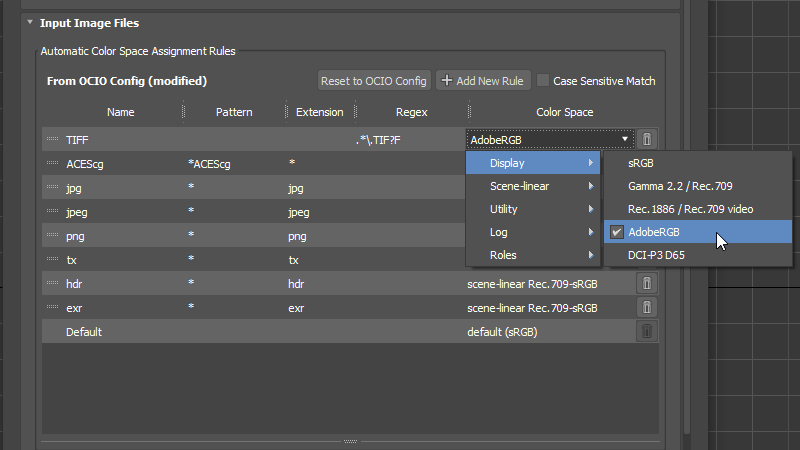OCIO-based color management has moved out of the Technology Preview phase. Colors in 3ds Max can be controlled from input to output, enabling end-to-end color-managed workflow.

Among the many improvements to color management:
- The settings that used to be on the Color Management tab of the Preference Settings dialog have been moved to the new modeless Color Management Settings dialog. The command now opens this dialog instead of the Preference Settings.
- A new color-management mode has been added: OCIO - Environment Variable. It uses the configuration file specified by the OCIO environment variable. This is an environment variable that can be set to the path and name of a configuration file to be used by various OCIO-enabled applications in order to ensure consistency across a content pipeline.
- You can edit the rules that automatically assign image inputs to color spaces so that they better match the color spaces and naming conventions that you use. You can also import and export the rules to share them between scenes. For the full details, see To Edit Color-space Assignment Rules.
- You can now use hexadecimal format to enter a color in the Color Selector dialog.
- Colors that are specified by temperature (kelvin) work with all rendering color spaces, not just linear sRGB.
- Issues relating to color management are reported on the new Color Management tab of the Render Messages window.
- In OCIO-based modes, the initial values for Physical Camera Exposure Control have changed so that non-linear tone mapping is no longer applied by default. However, changing the Image Control settings from the defaults will cause tone mapping to be incorrectly applied twice. For details, see Exposure and Color Management.
- OpenColorIO has been updated to version 2.2.1.
Please continue to submit any technical problems, questions, or other feedback to our forum.